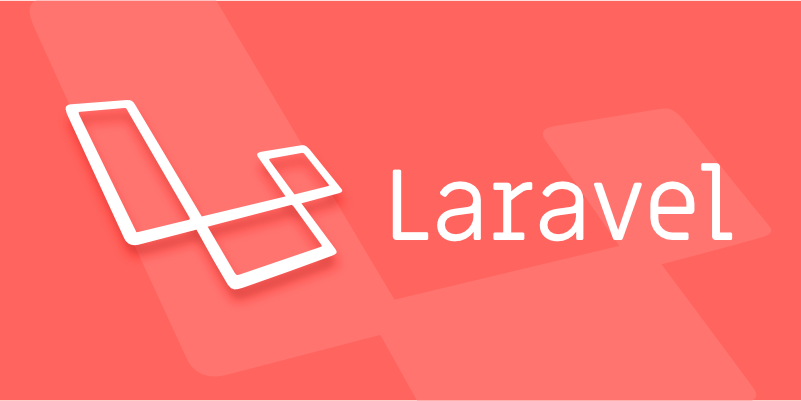Laravel migration is a database version control tool that uses code to manage database structure changes. 1. Migrate Git like "Database" to record operations such as creating tables, adding columns, etc., to facilitate team collaboration and rollback. 2. Use the Artisan command to create a migration file, such as php artisan make:migration create_users_table, and you can specify the operation type through --create or --table. 3. In the migration file, the up() method defines structure changes, and down() is used for rollback. 4. Use php artisan migrate to perform migration, and you can use --path to specify a specific file. 5. Use migrate:rollback to rollback the previous migration, use migrate:reset to rollback, and use migrate:refresh to redo all migrations. 6. Practical suggestions include naming specifications, avoiding manual library modification, filling data with Seeder, paying attention to field length and foreign key constraints. Although migration is a bit complicated to beginners, it can significantly reduce communication and deployment costs.

Laravel's Migrations is a database version control tool. Simply put, it is to use code to manage changes in database structure. It allows you to define the table structure like writing code and synchronize these changes between different environments, such as when migrating from a development environment to a production environment, there will be no problems due to inconsistent database structures.

What is Laravel migration?
You can understand migration as "Git of the database". Every time you create a new table or modify a field, you can generate a migration file. This file records the operations you want to perform, such as creating tables, adding columns, deleting indexes, etc.
The benefits of doing this are:

- No need to manually modify the database structure
- Teamwork is more convenient, everyone uses the same migration script to operate the database
- Can rollback operations to avoid data loss due to incorrect operations
For example: If you want to create a user table now, you only need to run a command, Laravel will automatically generate the migration file and corresponding operation logic for you.
How to create and run a migration?
Laravel provides Artisan command line tools to help you quickly create and execute migrations.

Create a migration file:
php artisan make:migration create_users_table
You can also include the --create or --table parameters to specify whether to create a new table or modify an existing table:
php artisan make:migration create_posts_table --create=posts php artisan make:migration add_avatar_to_users_table --table=users
Write migration content:
Open the generated migration file and you will see two methods: up() and down() .
-
up()is used to apply changes, such as creating tables or adding fields -
down()is a rollback operation, such as deleting a table or field
For example, create a user table:
public function up()
{
Schema::create('users', function (Blueprint $table) {
$table->id();
$table->string('name');
$table->string('email')->unique();
$table->timestamps();
});
}Perform a migration:
After saving, run the following command to perform migration:
php artisan migrate
If you want to run only a migration file, you can specify the path with the --path parameter.
How to rollback and redo migration?
What to do if there is a migration error? Laravel provides rollback functionality.
Roll back to the last migration:
php artisan migrate:rollback
Roll back all migrations:
php artisan migrate:reset
Roll back and rerun all migrations:
php artisan migrate:refresh
These commands are especially useful during the debugging phase, especially when adjusting the field type or index.
Some tips for practical use
- Naming specifications are important : migration file names should clearly state what is done, such as
add_status_to_orders_table. - Try not to manually change the database structure : otherwise, the migration file and the actual structure will be inconsistent and errors will be prone to occur.
- Use it in conjunction with model factory and seed filling : After the migration is completed, you can use Seeder to insert the test data.
- Pay attention to the field length and default value : For example, the default
stringis 255. If it is not enough, usetextor custom length. - Remember to deal with foreign key constraints : use
$table->foreignId()to establish foreign key relationships to avoid data consistency issues.
Basically that's it. Migration is not a black technology, but it is a very practical tool for organizing database structures in Laravel. It may feel troublesome at first, but after using it a few times, you will find that it can save a lot of communication and deployment costs.
The above is the detailed content of What are migrations in Laravel and how to use them?. For more information, please follow other related articles on the PHP Chinese website!

Hot AI Tools

Undress AI Tool
Undress images for free

Undresser.AI Undress
AI-powered app for creating realistic nude photos

AI Clothes Remover
Online AI tool for removing clothes from photos.

Clothoff.io
AI clothes remover

Video Face Swap
Swap faces in any video effortlessly with our completely free AI face swap tool!

Hot Article

Hot Tools

Notepad++7.3.1
Easy-to-use and free code editor

SublimeText3 Chinese version
Chinese version, very easy to use

Zend Studio 13.0.1
Powerful PHP integrated development environment

Dreamweaver CS6
Visual web development tools

SublimeText3 Mac version
God-level code editing software (SublimeText3)
 Working with pivot tables in Laravel Many-to-Many relationships
Jul 07, 2025 am 01:06 AM
Working with pivot tables in Laravel Many-to-Many relationships
Jul 07, 2025 am 01:06 AM
ToworkeffectivelywithpivottablesinLaravel,firstaccesspivotdatausingwithPivot()orwithTimestamps(),thenupdateentrieswithupdateExistingPivot(),managerelationshipsviadetach()andsync(),andusecustompivotmodelswhenneeded.1.UsewithPivot()toincludespecificcol
 Sending different types of notifications with Laravel
Jul 06, 2025 am 12:52 AM
Sending different types of notifications with Laravel
Jul 06, 2025 am 12:52 AM
Laravelprovidesacleanandflexiblewaytosendnotificationsviamultiplechannelslikeemail,SMS,in-appalerts,andpushnotifications.Youdefinenotificationchannelsinthevia()methodofanotificationclass,andimplementspecificmethodsliketoMail(),toDatabase(),ortoVonage
 Understanding Dependency Injection in Laravel?
Jul 05, 2025 am 02:01 AM
Understanding Dependency Injection in Laravel?
Jul 05, 2025 am 02:01 AM
Dependency injection automatically handles class dependencies through service containers in Laravel without manual new objects. Its core is constructor injection and method injection, such as automatically passing in the Request instance in the controller. Laravel parses dependencies through type prompts and recursively creates the required objects. The binding interface and implementation can be used by the service provider to use the bind method, or singleton to bind a singleton. When using it, you need to ensure type prompts, avoid constructor complications, use context bindings with caution, and understand automatic parsing rules. Mastering these can improve code flexibility and maintenance.
 Strategies for optimizing Laravel application performance
Jul 09, 2025 am 03:00 AM
Strategies for optimizing Laravel application performance
Jul 09, 2025 am 03:00 AM
Laravel performance optimization can improve application efficiency through four core directions. 1. Use the cache mechanism to reduce duplicate queries, store infrequently changing data through Cache::remember() and other methods to reduce database access frequency; 2. Optimize database from the model to query statements, avoid N 1 queries, specifying field queries, adding indexes, paging processing and reading and writing separation, and reduce bottlenecks; 3. Use time-consuming operations such as email sending and file exporting to queue asynchronous processing, use Supervisor to manage workers and set up retry mechanisms; 4. Use middleware and service providers reasonably to avoid complex logic and unnecessary initialization code, and delay loading of services to improve startup efficiency.
 Managing database state for testing in Laravel
Jul 13, 2025 am 03:08 AM
Managing database state for testing in Laravel
Jul 13, 2025 am 03:08 AM
Methods to manage database state in Laravel tests include using RefreshDatabase, selective seeding of data, careful use of transactions, and manual cleaning if necessary. 1. Use RefreshDatabasetrait to automatically migrate the database structure to ensure that each test is based on a clean database; 2. Use specific seeds to fill the necessary data and generate dynamic data in combination with the model factory; 3. Use DatabaseTransactionstrait to roll back the test changes, but pay attention to its limitations; 4. Manually truncate the table or reseed the database when it cannot be automatically cleaned. These methods are flexibly selected according to the type of test and environment to ensure the reliability and efficiency of the test.
 Choosing between Laravel Sanctum and Passport for API authentication
Jul 14, 2025 am 02:35 AM
Choosing between Laravel Sanctum and Passport for API authentication
Jul 14, 2025 am 02:35 AM
LaravelSanctum is suitable for simple, lightweight API certifications such as SPA or mobile applications, while Passport is suitable for scenarios where full OAuth2 functionality is required. 1. Sanctum provides token-based authentication, suitable for first-party clients; 2. Passport supports complex processes such as authorization codes and client credentials, suitable for third-party developers to access; 3. Sanctum installation and configuration are simpler and maintenance costs are low; 4. Passport functions are comprehensive but configuration is complex, suitable for platforms that require fine permission control. When selecting, you should determine whether the OAuth2 feature is required based on the project requirements.
 Implementing Database Transactions in Laravel?
Jul 08, 2025 am 01:02 AM
Implementing Database Transactions in Laravel?
Jul 08, 2025 am 01:02 AM
Laravel simplifies database transaction processing with built-in support. 1. Use the DB::transaction() method to automatically commit or rollback operations to ensure data integrity; 2. Support nested transactions and implement them through savepoints, but it is usually recommended to use a single transaction wrapper to avoid complexity; 3. Provide manual control methods such as beginTransaction(), commit() and rollBack(), suitable for scenarios that require more flexible processing; 4. Best practices include keeping transactions short, only using them when necessary, testing failures, and recording rollback information. Rationally choosing transaction management methods can help improve application reliability and performance.
 Handling HTTP Requests and Responses in Laravel.
Jul 16, 2025 am 03:21 AM
Handling HTTP Requests and Responses in Laravel.
Jul 16, 2025 am 03:21 AM
The core of handling HTTP requests and responses in Laravel is to master the acquisition of request data, response return and file upload. 1. When receiving request data, you can inject the Request instance through type prompts and use input() or magic methods to obtain fields, and combine validate() or form request classes for verification; 2. Return response supports strings, views, JSON, responses with status codes and headers and redirect operations; 3. When processing file uploads, you need to use the file() method and store() to store files. Before uploading, you should verify the file type and size, and the storage path can be saved to the database.






